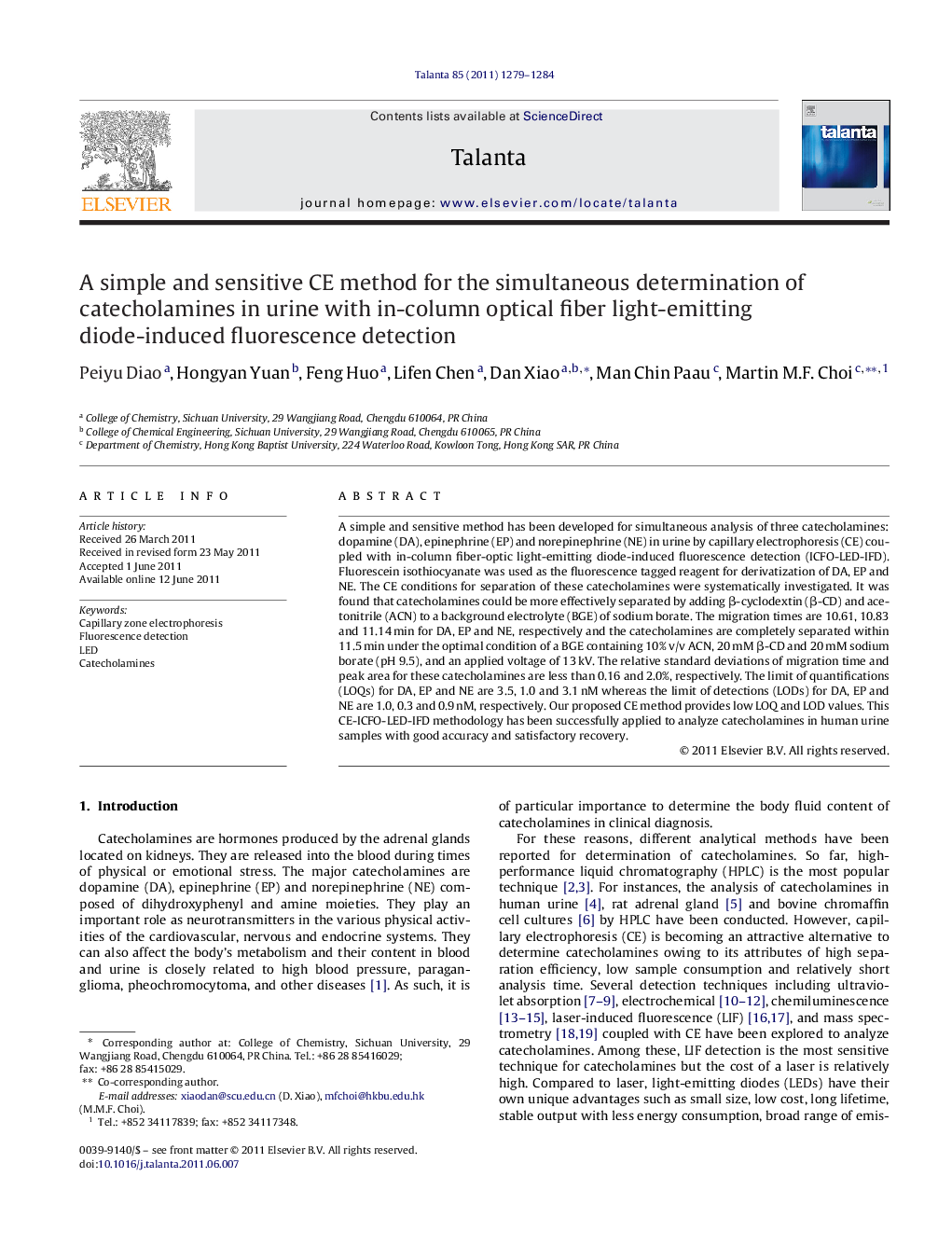| Article ID | Journal | Published Year | Pages | File Type |
|---|---|---|---|---|
| 10560473 | Talanta | 2011 | 6 Pages |
Abstract
A simple and sensitive method has been developed for simultaneous analysis of three catecholamines: dopamine (DA), epinephrine (EP) and norepinephrine (NE) in urine by capillary electrophoresis (CE) coupled with in-column fiber-optic light-emitting diode-induced fluorescence detection (ICFO-LED-IFD). Fluorescein isothiocyanate was used as the fluorescence tagged reagent for derivatization of DA, EP and NE. The CE conditions for separation of these catecholamines were systematically investigated. It was found that catecholamines could be more effectively separated by adding β-cyclodextin (β-CD) and acetonitrile (ACN) to a background electrolyte (BGE) of sodium borate. The migration times are 10.61, 10.83 and 11.14 min for DA, EP and NE, respectively and the catecholamines are completely separated within 11.5 min under the optimal condition of a BGE containing 10% v/v ACN, 20 mM β-CD and 20 mM sodium borate (pH 9.5), and an applied voltage of 13 kV. The relative standard deviations of migration time and peak area for these catecholamines are less than 0.16 and 2.0%, respectively. The limit of quantifications (LOQs) for DA, EP and NE are 3.5, 1.0 and 3.1 nM whereas the limit of detections (LODs) for DA, EP and NE are 1.0, 0.3 and 0.9 nM, respectively. Our proposed CE method provides low LOQ and LOD values. This CE-ICFO-LED-IFD methodology has been successfully applied to analyze catecholamines in human urine samples with good accuracy and satisfactory recovery.
Related Topics
Physical Sciences and Engineering
Chemistry
Analytical Chemistry
Authors
Peiyu Diao, Hongyan Yuan, Feng Huo, Lifen Chen, Dan Xiao, Man Chin Paau, Martin M.F. Choi,
